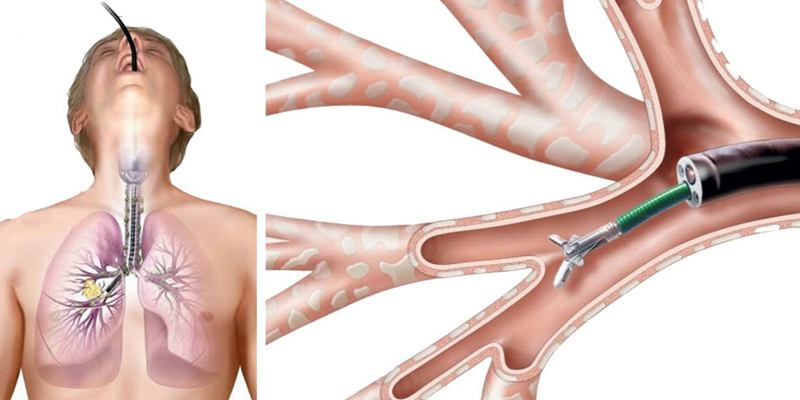
WHAT IS A BRONCHOSCOPY?
A bronchoscopy is a test that allows your doctor to examine your airways. Your doctor will thread an instrument called a bronchoscope through your nose or mouth and down your throat to reach your lungs. The bronchoscope is made of a flexible fiber-optic material and has a light source and a camera on the end. Most bronchoscopes are compatible with color video, which helps your doctor document their findings.
WHY DOES A DOCTOR ORDER A BRONCHOSCOPY?
Using the bronchoscope, your doctor can view all of the structures that make up your respiratory system. These include your larynx, trachea, and the smaller airways of your lungs, which include the bronchi and bronchioles.
LUNG VOLUME MEASUREMENT CAN BE PERFORMED IN TWO WAYS:
The most accurate way is for a person to sit in a body plethysmograph, a sealed, transparent box that resembles a telephone booth, while breathing in and out against into a mouthpiece. Changes in pressure inside the box allow determination of the lung volume. Lung volume can also be measured when a person breathes nitrogen or helium gas through a tube for a specified period of time. The concentration of the gas in a chamber attached to the tube is measured, allowing estimation of the lung volume. The diffusion capacity is measured when a person breathes carbon monoxide for a very short time, often one breath. The concentration of carbon monoxide in exhaled air is then measured. The difference in the amount of carbon monoxide inhaled and the amount exhaled allows estimation of how rapidly gas can travel from the lungs into the blood.